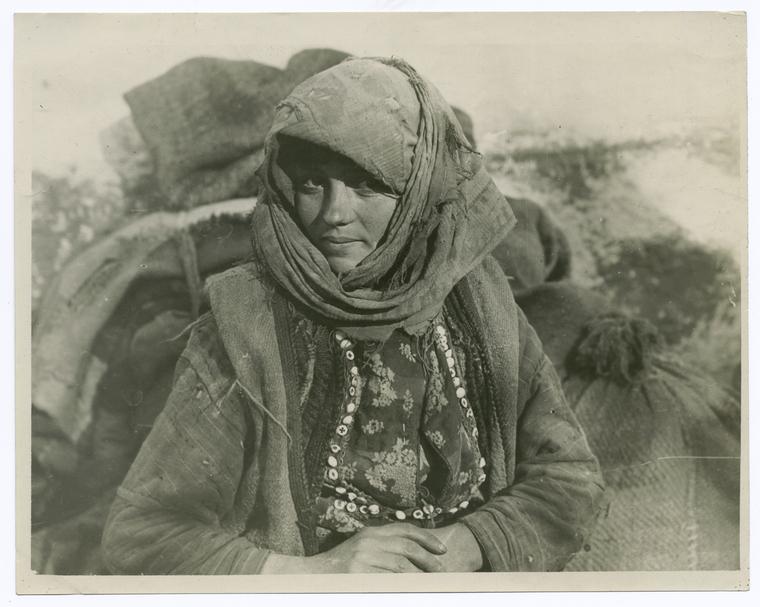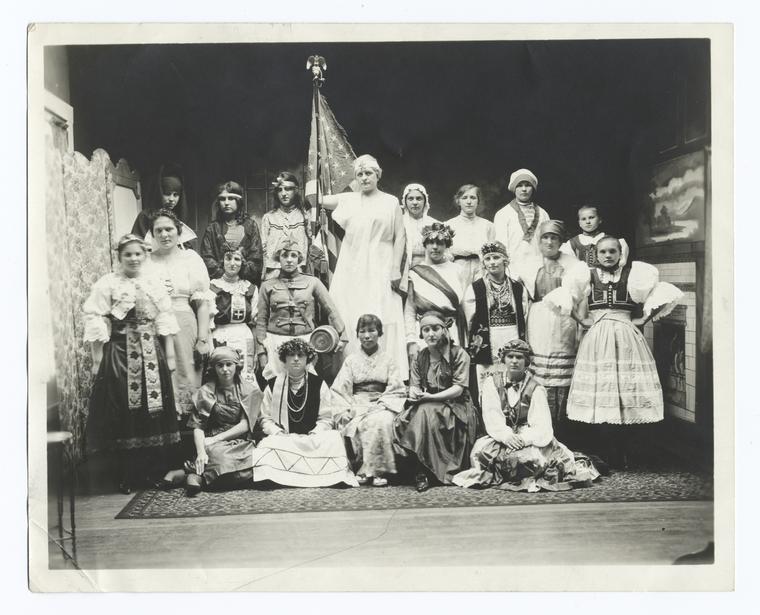How Were Immigrants Seen…A Hundred Years Ago?

According to the Migration Policy Institute, immigrants constituted 13-15% of the total U.S. population between 1870 and 1920, the highest percentage seen until that time. In 1920, the total number of immigrants living in the U.S. reached almost 14 million people, another historical record for the time. This situation did not go unnoticed. Politicians, journalists, and scholars rushed to address it.
In 1907, a bipartisan United States Immigration Commission was formed to study the origins and consequences of this recent immigration. Over a period of 3 years, it employed over 300 people and published a massive 41 volume set under the title Reports of the Immigration Commission. The Commission argued that immigration from Southern and Eastern Europe should be reduced. Thus, in 1921 the Emergency Quota Act was passed and three years later the Johnson-Reed Act set a quota on immigration.

In the midst of these political developments, journalists and scholars likewise published works on immigrant communities, including the early classic study, Our Slavic Fellow Citizens (1910) by Emily Greene Balch (1867-1961), an American scholar and pacifist. In 1922, The New American Series on various immigrant groups was published under the auspices of the Interchurch World Movement. Organized in 1918, this movement had the stated goal of uniting certain Protestant churches, in order to streamline their activities (see its World Survey). The editor of the series was Charles Hatch Sears (1870-1943), a pastor and the General Secretary of the Baptist Mission Society. Frederic A. Gould (1852-1938), a pastor of the First Methodist Episcopal church of Jamestown, N.Y., served as the assistant editor.
 The New American Series was “…undertaken to show, in brief outline the social, economic and religious background, European or Asiatic, of each group and to present the experience—social, economic and religious—of the particular group in America, with special reference to the contact of the given people with religious institutions in America (from the preface).
The New American Series was “…undertaken to show, in brief outline the social, economic and religious background, European or Asiatic, of each group and to present the experience—social, economic and religious—of the particular group in America, with special reference to the contact of the given people with religious institutions in America (from the preface).
Unlike the Immigration Commission, which was predominantly concerned with the economic and social impact of the recent mass immigration, the editor of The New American Series hoped that it would "help America to appreciate and appropriate the spiritual wealth represented by the vast body of New Americans." Studies published in this series were prepared by a member of a given immigrant community or by someone who had a direct and intimate relationship with that community. Contributors to the series were selected on the basis of their first-hand knowledge and willingness to write from a sympathetic and broadly Christian viewpoint.
The following studies were published in The New American Series:
- The Czecho-Slovaks in America by Kenneth D. Miller, also in HathiTrust.
- The Greeks in America by J. P. Xenides, also in HathiTrust
- The Italians in America by Phillip M. Rose, also in HathiTrust
- The Magyars in America by D.A. Souders, also in HathiTrust
- The Poles in America by Paul Fox, also in HathiTrust
- The Russians and Ruthenians in America; Bolsheviks or Brothers? by Jerome Davis, also in HathiTrust
In addition to the above books, the editor was planning to have books on several other groups prepared, namely: Albanian, Bulgarian, Armenian, Assyrian- Chaldean, Jewish, Jugo-Slav (Croatian, Serbian, Slovenian), Spanish (Spaniards) and Portuguese, and Syrian. He hoped that these titles would be published as soon as funds or advanced orders were secured, but this did not happen. In 1925, the assistant editor Frederic A. Gould, together with Amy Blanche Green, published Handbook-bibliography on Foreign Language Groups in the United States and Canada. Amy Blanche Green was the Executive Secretary of the Bureau of Foreign Language Literature of the Methodist Episcopal Church, which continued its work among the immigrants.

Read E-Books with SimplyE
 With your library card, it's easier than ever to choose from more than 300,000 e-books on SimplyE, The New York Public Library's free e-reader app. Gain access to digital resources for all ages, including e-books, audiobooks, databases, and more.
With your library card, it's easier than ever to choose from more than 300,000 e-books on SimplyE, The New York Public Library's free e-reader app. Gain access to digital resources for all ages, including e-books, audiobooks, databases, and more.
If you don’t have an NYPL library card, New York State residents can apply for a digital card online or through SimplyE (available on the App Store or Google Play).
Need more help? Read our guide to using SimplyE.